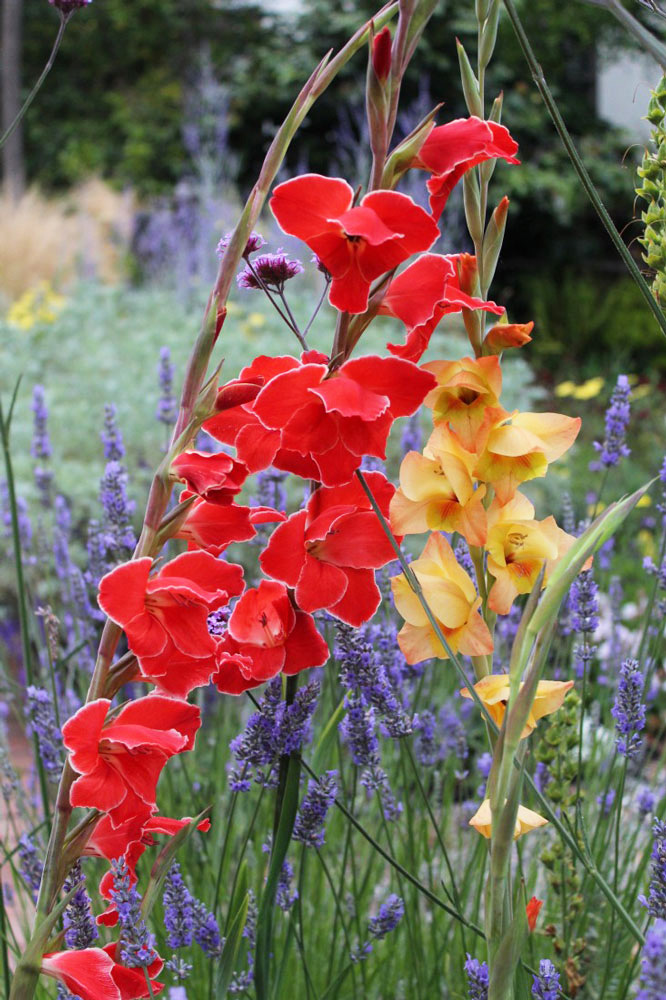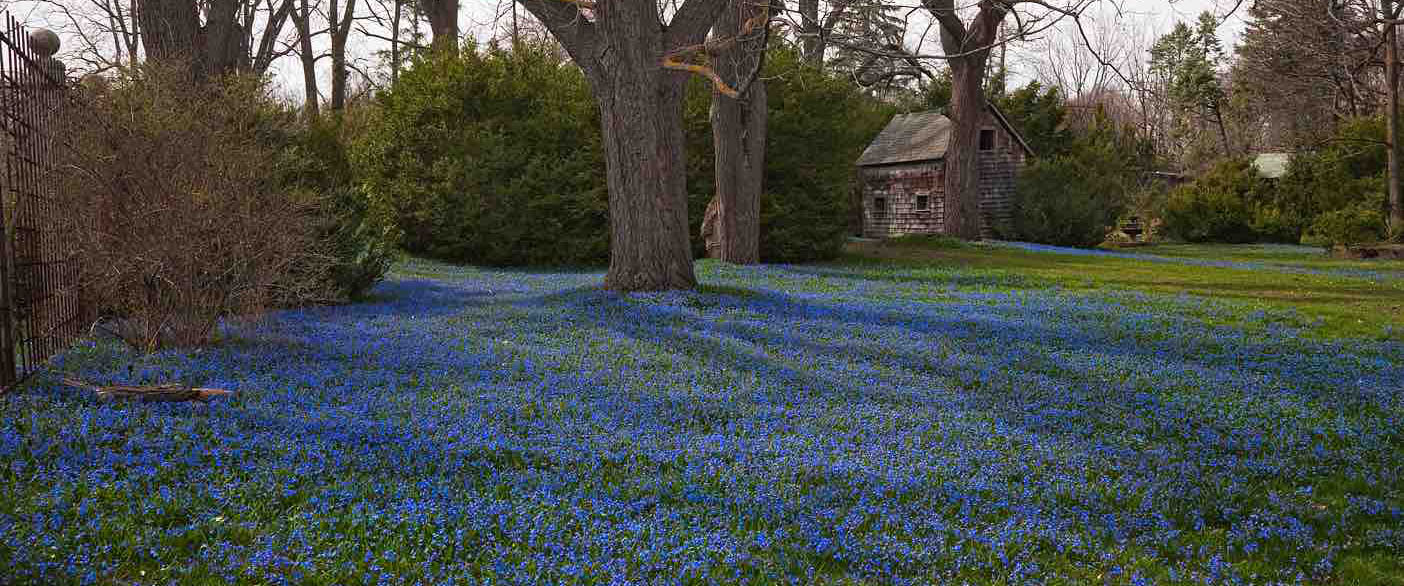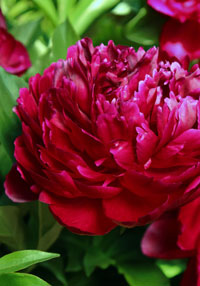“How and why does a flower fall out of fashion?” asks Gardenista blogger Michelle Slatalla in what she calls the first of a new series, Rethinking Flowers, devoted to “old garden favorites that deserve a second chance.”
First up – gladiolus! Like many gardeners, Michelle had never grown glads before, but when we sent her a few of our small-flowered and unusual heirlooms (including ‘Atom’ and ‘Boone’, pictured here in her garden), she ended up seeing them in a whole new light.
Glads are “breathtaking,” she writes, and our graceful “heirloom varieties mingle well with other perennials.” In her California garden, for example, Michelle grows them among clumps of lavender whose cool tones perfectly complement the warmer colors of many glads.
For more – including evocative photos from Michelle’s garden and an account of an ultra high-society wedding in 1923 with the bride and her attendants “fairly staggering under the weight of gladiolus” – check out the whole wonderful post at Gardenista.com.






















